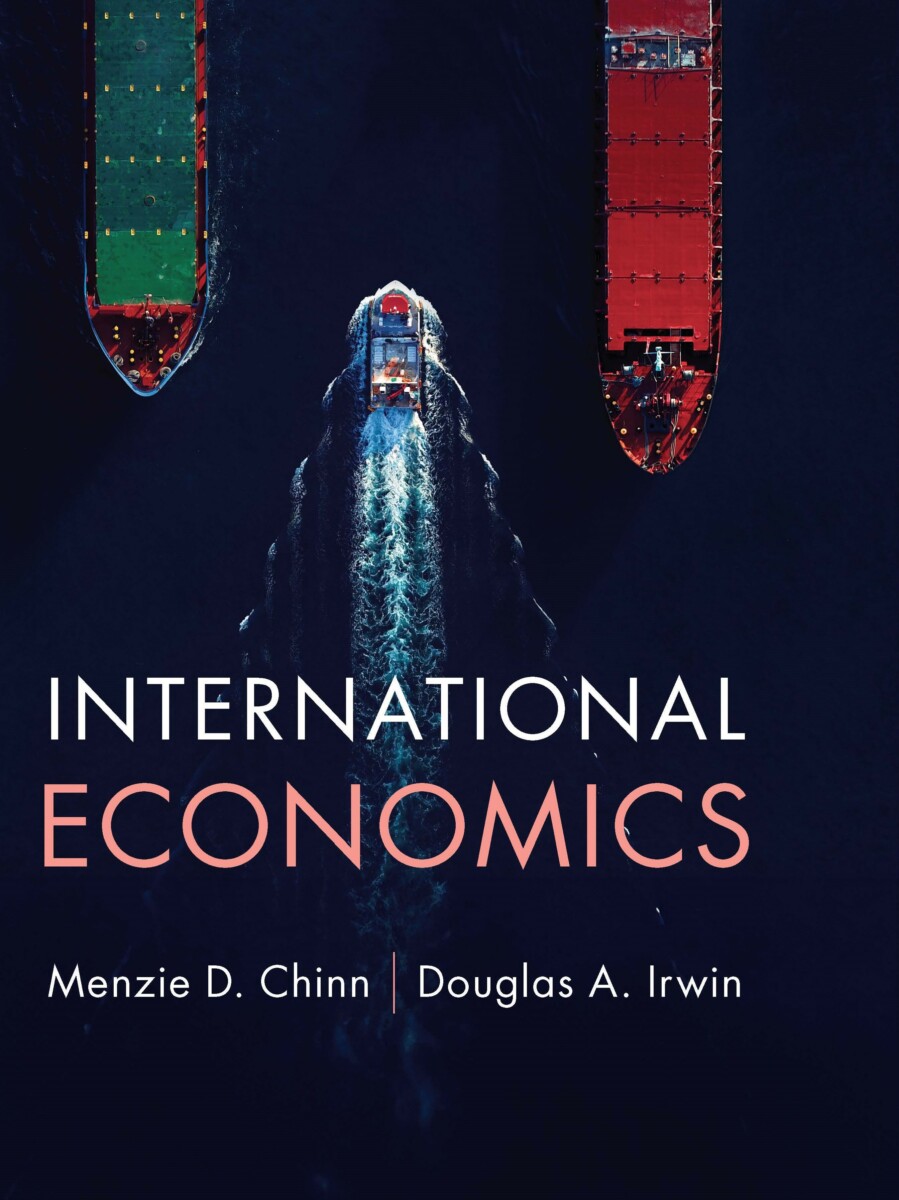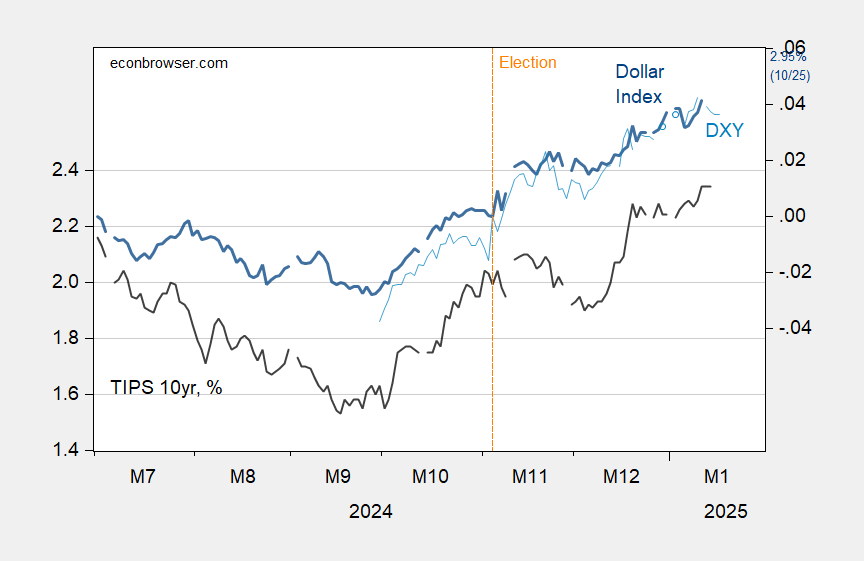Are you teaching international economics in the spring? Or just want to learn more about the field? Consider adopting/purchasing this new textbook, by myself and Douglas Irwin (available now in digital format, January 31st in hardcopy from Cambridge University Press).
Endorsements from Avinash Dixit, Barry Eichengreen, and Jeffrey Frankel:
“At a time when globalization is under threat everywhere, a clear and simple analysis of the effects of international trade and finance – who gains, who loses, what risks are created and reduced, and what policies are best on balance – grounded in good theory, and supported by data relevant to today’s world, is essential. Chinn and Irwin provide that in this outstanding new textbook. I wish it was required reading for the general public, not just for classroom
use.”
— AVINASH DIXIT, Princeton University
“Two outstanding international economists have brought us a first-rate new textbook. Written very clearly, it will be highly accessible to the typical student. It is chock-full of historical examples, as recent as the effect of Russia’s war in Ukraine on global wheat prices. The historical cases introduce each chapter and then illustrate the theory afterwards.”
— JEFFREY FRANKEL, Harvard University
“Chinn and Irwin’s International Economics is definitive but also accessible. Economic theory is brought alive with a combination of practical applications, historical examples, and real-world applications. Students are sure to be engaged.”
— BARRY EICHENGREEN, University of California
A general description:
The globalized world economy is more important than ever before. This book provides a clear and up-to-date look at the economic foundations of international economics. Attractively presented, with abundant full-color diagrams and graphs incorporating contemporary trade data, the authors explain the principal concepts in an engaging and accessible manner open to students from any discipline. Economic models are discussed in the context of
recent international trade issues to ensure students gain a concrete understanding of how various frameworks help us make sense of the real world. Written for undergraduate students taking their first course in international economics, the book includes feature
boxes that show how theory can be applied in practice, a featured real-world application for every chapter, and over 240 end-of-chapter questions to help students fully engage with and consolidate their learning. Online resources for instructors include a solutions manual, lecture slides, and the figures and tables from the book as JPEGs.
Separate International Trade and International Finance texts are available, as are ancillary materials (slide decks, test bank).
Some real world applications in the textbook include past and recent episodes – Shoguns, Trump tariffs, China’s industrial policies, washing machine tariffs, the twin deficits of 2018, US inflation 2021-22, and Zimbabwe’s hyperinflation.
If you want to consider the choices facing Russia in 2025, think about those it faced in 2014 (when it seized Crimea and launched a surrogate insurgency in the eastern provinces of Ukraine), read Chapter 14 (policy options under fixed exchange rates). Why the dollar is so strong? Chapter 17 (exchange rate determination) is for you.
Figure 1: TIPS 10 year, % (black, left scale); nominal Fed dollar index (blue, right scale), and DXY (light blue, right scale), in log deviation from election day. Source: Treasury, Federal Reserve via FRED, investing.com, and author’s calculations.
Why as of June, the yuan BigMac parity undervaluation estimate of 38% (according to PPP) is inappropriate, but 25% is more appropriate then Chapter 17 is relevant. And of course, to find out what do tariffs do and who actually pays for them you’ve got to read Chapter 8.
The Cambridge University Press website for the textbook here.


Congratulations.